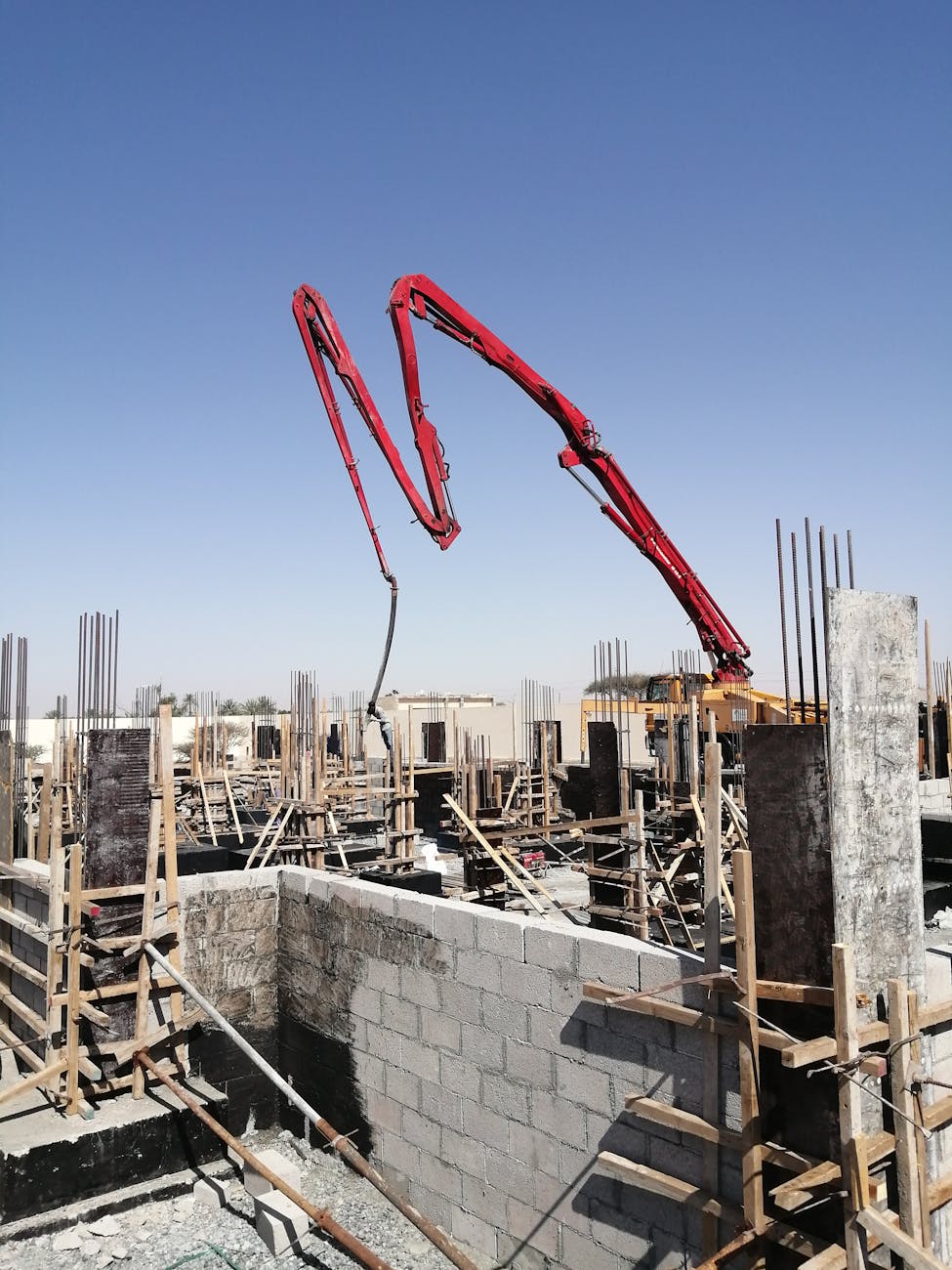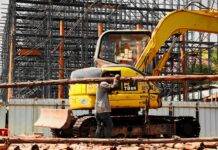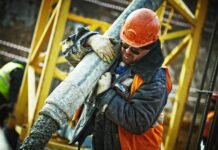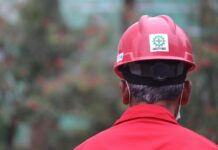
Concreting Safety Interview: 50 Questions and Sample Answers
1. What is concreting safety?
Answer: Concreting safety refers to the measures and precautions taken to protect workers from hazards associated with concrete work, including handling, mixing, pouring, and curing.
2. Why is safety important in concreting work?
Answer: Safety is crucial to prevent injuries, chemical burns, respiratory issues, falls, and structural failures during concrete work.
3. What are the common hazards in concreting work?
Answer:
- Chemical burns from cement
- Slips, trips, and falls
- Heavy lifting injuries
- Dust inhalation
- Equipment-related hazards
4. What PPE is required for concreting work?
Answer:
- Gloves (to prevent skin burns)
- Safety goggles (to protect eyes from splashes)
- Respirators (for dust protection)
- Rubber boots (to avoid wet cement contact)
5. What is the most common injury in concreting work?
Answer: Cement burns and skin irritation due to prolonged exposure to wet concrete.
6. How do you prevent cement burns?
Answer:
- Wear impermeable gloves and long sleeves
- Wash off cement splashes immediately
- Use barrier creams
7. What precautions should be taken when handling cement?
Answer:
- Store cement bags in dry areas
- Lift bags properly to prevent back injuries
- Wear masks to avoid inhaling cement dust
8. How do you safely mix concrete?
Answer:
- Add water gradually to prevent splashing
- Use mechanical mixers when possible
- Keep hands and tools away from rotating parts
9. What are the risks associated with freshly poured concrete?
Answer:
- Skin irritation from chemicals
- Falls due to slippery surfaces
- Structural collapse if not properly supported
10. What is the purpose of formwork in concreting?
Answer: Formwork provides temporary support to wet concrete until it gains sufficient strength.
11. What are the hazards associated with formwork?
Answer:
- Collapse due to overloading
- Falls from height while installing/removing
- Nail and splinter injuries
12. How do you ensure formwork safety?
Answer:
- Inspect for cracks, weaknesses, and defects
- Use proper bracing and supports
- Ensure trained workers install and dismantle
13. What is the importance of curing concrete?
Answer: Curing maintains moisture and temperature for proper strength development.
14. What safety precautions should be taken while curing concrete?
Answer:
- Use proper PPE when applying curing compounds
- Avoid walking on freshly cured concrete
- Prevent water stagnation that can cause slips
15. How do you control dust exposure while cutting concrete?
Answer:
- Use wet cutting methods
- Wear respirators and dust masks
- Provide adequate ventilation
16. What are the safety precautions for concrete pumping?
Answer:
- Keep workers clear of hose discharge points
- Inspect hoses and connections for leaks
- Secure hoses to prevent whipping
17. How do you safely work with ready-mix concrete?
Answer:
- Avoid direct contact with wet concrete
- Keep a safe distance from the truck chute
- Ensure the truck is on stable ground
18. What precautions should be taken when pouring concrete at heights?
Answer:
- Use harnesses and guardrails
- Ensure stable platforms and scaffolding
- Prevent objects from falling below
19. What are the risks of working with high-strength concrete?
Answer:
- High temperatures during curing
- Increased dust exposure
- More difficult to handle and finish
20. How do you prevent injuries while lifting concrete bags?
Answer:
- Use mechanical lifting aids
- Bend your knees, not your back
- Work in teams for heavy loads
21. What is a concrete vibrator, and how do you use it safely?
Answer: A concrete vibrator removes air bubbles for better compaction. Ensure grounding and proper handling to avoid electrical hazards.
22. How do you prevent concrete spillage hazards?
Answer:
- Use proper chute placement
- Keep pouring areas organized
- Dispose of excess concrete safely
23. What is the role of rebar in concrete safety?
Answer: Rebar improves structural integrity, but exposed ends can cause puncture injuries.
24. How do you safely place rebar?
Answer:
- Wear cut-resistant gloves
- Cap sharp rebar ends
- Use rebar tying tools
25. What are the hazards of working in confined spaces for concreting?
Answer:
- Oxygen deficiency
- Toxic fumes from curing compounds
- Risk of engulfment in wet concrete
26. What is a hot weather concreting hazard?
Answer: Rapid drying and cracking due to high temperatures.
27. What safety measures should be taken during cold weather concreting?
Answer:
- Use heaters or insulated blankets
- Ensure proper curing conditions
28. How do you prevent trip hazards in a concreting site?
Answer:
- Keep hoses and tools organized
- Mark hazard zones with signs
29. What should be done if a concrete truck overturns?
Answer:
- Secure the area and prevent spills
- Contact emergency responders
- Ensure workers are at a safe distance
30. What precautions should be taken for high-rise concreting work?
Answer:
- Install perimeter safety nets
- Use fall arrest systems
31. How do you control noise hazards in concreting?
Answer:
- Wear earplugs or earmuffs
- Use low-noise equipment
32. How do you handle chemical admixtures safely?
Answer:
- Store in labeled containers
- Use SDS (Safety Data Sheets) for reference
33. What is shotcrete, and what are its safety hazards?
Answer: Shotcrete is sprayed concrete. Hazards include high-pressure spray and silica dust inhalation.
34. How do you ensure proper scaffolding safety in concreting?
Answer:
- Inspect scaffolding before use
- Use braces and guardrails
35. What is the danger of trapped air in concrete?
Answer: It reduces strength and may cause structural failures.
36. How do you prevent electrical hazards in concrete work?
Answer:
- Use insulated tools
- Ensure proper grounding
37. What is a slump test, and why is it important?
Answer: A slump test checks the consistency of concrete to ensure proper workability.
38. What is a concrete boom pump, and how do you use it safely?
Answer: A machine that pumps concrete to high places. Ensure operators are trained and aware of overhead hazards.
39. What is silica dust, and why is it dangerous?
Answer: Silica dust can cause lung disease (silicosis) when inhaled.
40. How do you prevent concrete mix segregation?
Answer:
- Properly mix and transport
- Avoid excessive water content
41. What are the common causes of concrete structural failure?
Answer:
- Poor mix design
- Improper curing
- Inadequate reinforcement
- Weak formwork or support failure
42. How do you ensure proper concrete compaction?
Answer:
- Use vibrators to remove air pockets
- Avoid over-vibration to prevent segregation
- Ensure consistent placement
43. What should be checked during a pre-concreting safety inspection?
Answer:
- Condition of formwork and supports
- Availability of PPE and safety equipment
- Weather conditions for suitability
44. How do you handle concrete spills safely?
Answer:
- Contain spills immediately
- Use proper disposal methods
- Prevent runoff into drainage systems
45. What are the risks of working near moving concrete trucks?
Answer:
- Crush injuries from reversing trucks
- Slips and falls on spilled concrete
- Dust exposure from loading and unloading
46. What safety precautions should be taken when dismantling formwork?
Answer:
- Ensure concrete has fully cured
- Use proper lifting techniques
- Secure all loose materials
47. How do you prevent concrete blowouts?
Answer:
- Ensure proper bracing of formwork
- Do not overload formwork capacity
- Inspect formwork for cracks or weaknesses
48. What are the emergency procedures in case of a concrete-related accident?
Answer:
- Provide first aid for burns or injuries
- Inform supervisors immediately
- Evacuate workers if structure failure occurs
49. Why is testing fresh concrete important for safety?
Answer: It ensures proper strength, workability, and durability, reducing the risk of structural failure.
50. What role does a Safety Officer play in concreting work?
Answer:
- Conducts site inspections
- Ensures workers wear PPE
- Trains workers on hazard prevention
- Enforces safe work procedures
Construction Safety Interview Questions and Sample Answers
20 Safety Rules of Construction Site
Material Handling Hazards and Control Measures
























